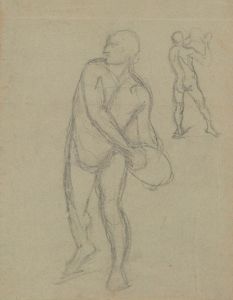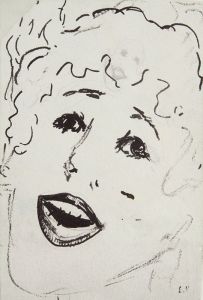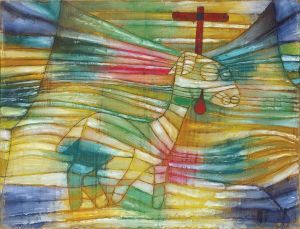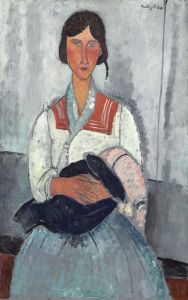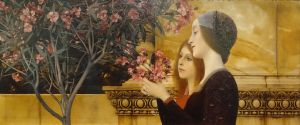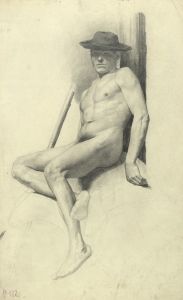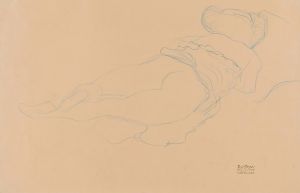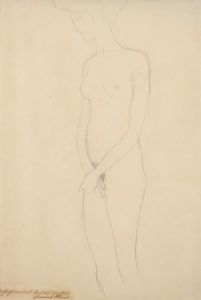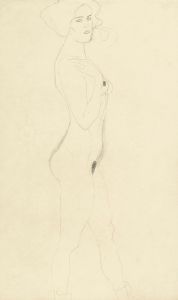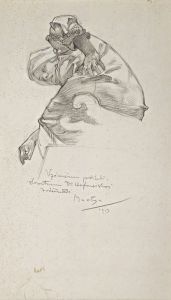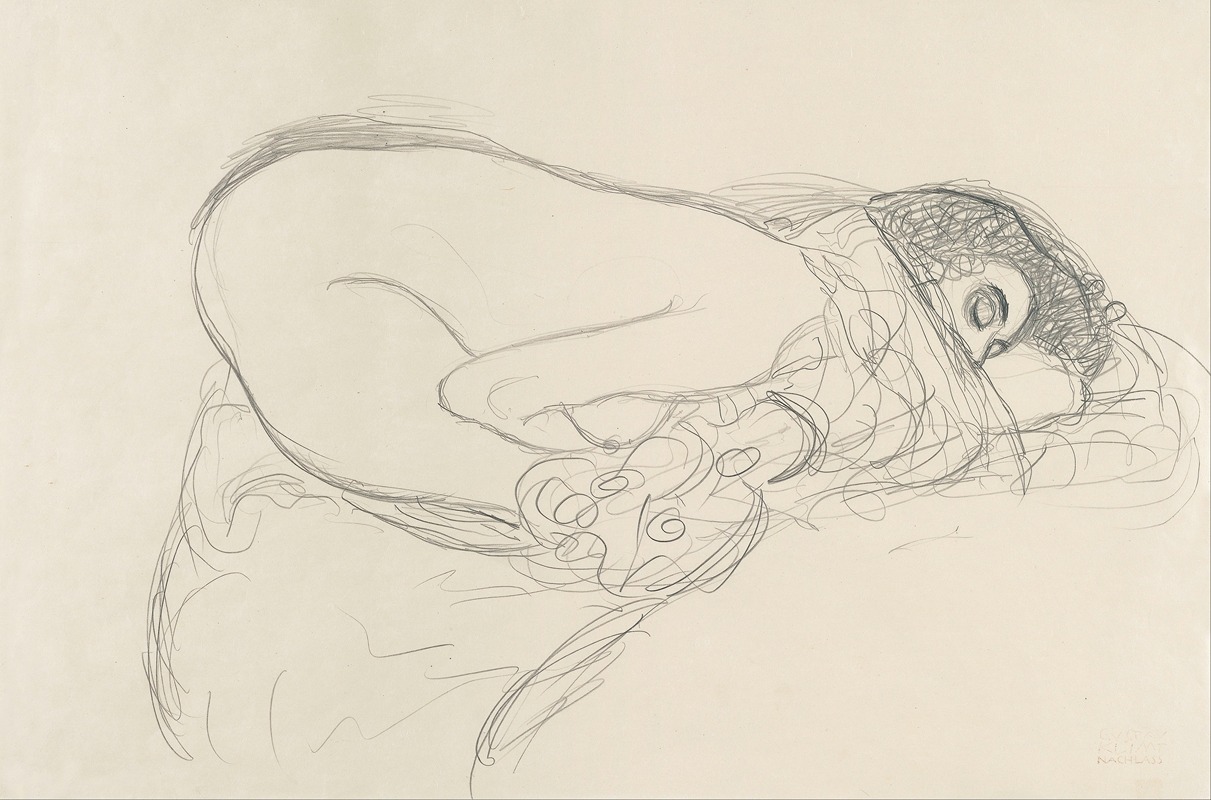
Semi-Nude leaning forward
A hand-painted replica of Gustav Klimt’s masterpiece Semi-Nude leaning forward, meticulously crafted by professional artists to capture the true essence of the original. Each piece is created with museum-quality canvas and rare mineral pigments, carefully painted by experienced artists with delicate brushstrokes and rich, layered colors to perfectly recreate the texture of the original artwork. Unlike machine-printed reproductions, this hand-painted version brings the painting to life, infused with the artist’s emotions and skill in every stroke. Whether for personal collection or home decoration, it instantly elevates the artistic atmosphere of any space.
Semi-Nude Leaning Forward is a drawing by the Austrian symbolist painter Gustav Klimt, created during the early 20th century. Klimt, renowned for his sensual and expressive depictions of the human form, produced this work as part of his extensive collection of preparatory sketches and studies. The drawing exemplifies his fascination with the female body, a recurring theme in his oeuvre.
The artwork is executed in pencil on paper, showcasing Klimt's mastery of line and form. It depicts a partially nude woman leaning forward, her posture conveying a sense of intimacy and vulnerability. The figure's body is rendered with delicate, flowing lines, emphasizing her natural curves and the softness of her form. Klimt's attention to anatomical detail and his ability to capture the subtleties of human expression are evident in this piece.
This drawing is believed to have been part of Klimt's preparatory work for larger compositions or standalone studies exploring themes of sensuality and the human figure. Klimt often used such sketches to experiment with poses, gestures, and compositions before incorporating them into his paintings. These studies also served as a means for him to explore the interplay between eroticism and artistic expression, which was a hallmark of his career.
Klimt's drawings, including Semi-Nude Leaning Forward, were not merely technical exercises but works of art in their own right. They reflect his ability to convey emotion and character through minimalistic yet precise lines. The simplicity of the medium—pencil on paper—highlights Klimt's skill in capturing the essence of his subjects without the need for elaborate details or color.
The exact date of creation for Semi-Nude Leaning Forward is not definitively documented, but it is consistent with Klimt's style and thematic focus during the height of his career, particularly in the early 1900s. During this period, Klimt was deeply involved in exploring themes of femininity, sensuality, and the human condition, which are evident in both his paintings and drawings.
As with many of Klimt's works, this drawing reflects the cultural and artistic milieu of Vienna at the turn of the 20th century. Klimt was a central figure in the Vienna Secession movement, which sought to break away from traditional academic art and embrace more modern, experimental approaches. His works, including his drawings, often challenged societal norms and provoked controversy for their overt sensuality and eroticism.
Today, Semi-Nude Leaning Forward is appreciated as an example of Klimt's skill as a draftsman and his ability to capture the beauty and complexity of the human form. It is part of the broader body of work that solidifies his legacy as one of the most influential artists of his time.





